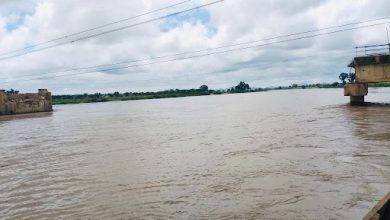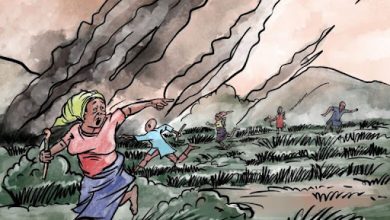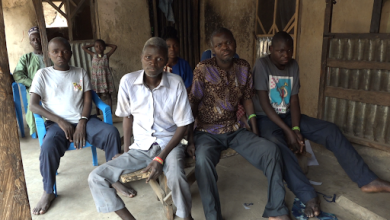Borno Communities Fear Repeat Floods as Alau Dam Remains Unrepaired
Months after the devastating Maiduguri flood, the federal government pledged ₦80 billion for the rehabilitation of Alau Dam. Yet, with the rainy season fast approaching, residents are bracing for another disaster. Key infrastructure remains in ruins, and no visible repair work has begun.
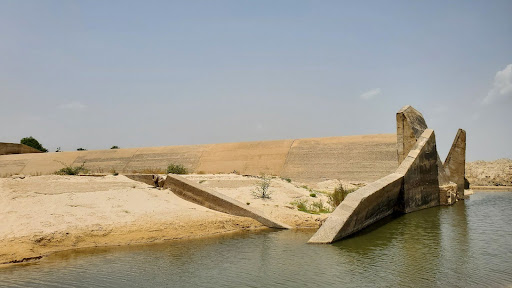
Every weekday, 38-year-old Fatima Musa grips her son’s hand as they step onto a makeshift bridge in Fori, a community in Jere Local Government Area (LGA) of Borno State, northeastern Nigeria. Together, they cross the poorly constructed structure to reach the primary school he attends, and later make the same journey home.
The original Fori Bridge collapsed during the devastating floods of September 2024, which inundated Maiduguri and its environs, leaving dozens dead and thousands displaced. The destruction severed vital connections between Bama Park and Market, the University of Maiduguri, and several neighbourhoods.
With no official intervention, local youths erected a makeshift crossing far from Fatima’s home. Constructed from wooden planks, logs, and sand-filled sacks, the narrow bridge hovers precariously over the Ngadda River, the same river that swept away homes, businesses, and livelihoods just months ago.
The disruption forced residents like Fatima to undertake perilous detours or depend on the makeshift bridge, which is far away from her home.

The community’s improvised fix has restored a semblance of connectivity, but it is fragile. In less than two months, seasonal rains will return, swelling the Ngadda once again. Residents told HumAngle they fear the structure will be destroyed, cutting them off from schools, hospitals, and markets, and deepening the isolation they already face.
The original Fori Bridge, a vital link for residents across several communities in Jere, was the first structure to collapse when the floods ravaged the area.

A student’s dread
For 27-year-old Zainab Yahaya, a student at the University of Maiduguri, the broken bridge is more than a daily inconvenience, it threatens her future. She crosses the makeshift bridge every day to attend classes. As the rainy season looms, her anxiety increases.
“I use the makeshift bridge now, but when the water returns, the bridge won’t survive it,” she said. “And then, everything becomes more difficult, more expensive, more dangerous and more exhausting.”
Last year’s flood destroyed her neighbourhood. This year, she fears her education may be next. Without the bridge, Zainab would be forced to take longer detours that significantly increase both cost and travel time.
“What used to cost ₦100 will now jump to ₦400,” she explained. “And the hours I lose taking detours, it’s hard to keep up with school. I will be exhausted before I reach class.”
Crossing by canoe is not an option she trusts. “It’s dangerous. The water is unpredictable, the canoes are unstable, and sometimes you don’t even know if the person paddling them is a professional or not,” Zainab added.
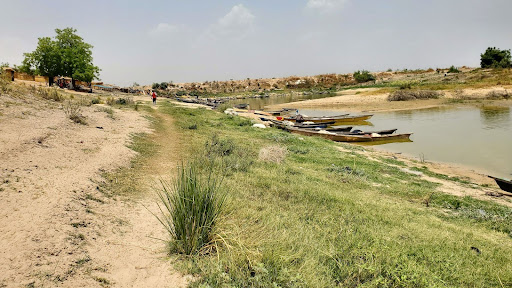
Her frustration is echoed throughout the community. “The government hasn’t done anything tangible. No repairs, no support, not even a visit,” she says. “We’re left on our own.”
A cycle doomed to repeat
A HumAngle investigation published in 2024 traced the flood’s origins to a combination of infrastructural decay, poor planning, and delayed emergency response at the Alau Dam.
Originally designed in 1986 to hold 112 million cubic meters of water, the dam’s capacity has swelled to an estimated 279 to 296 million cubic meters, primarily because of unchecked sediment buildup.
Every year, during the June-to-September monsoon, stormwater flows from the Mubi highlands into the Yedzeram River. This major tributary quickly swells and merges with the Gambole River, before entering the wetlands of the Sambisa Forest to form the headwaters of the Ngadda.
From there, the Ngadda empties into Lake Alau, held back by the Alau Dam, a large reservoir on the outskirts of Maiduguri. When rainfall is heavy upstream, the rivers surge downstream with little delay, raising water levels sharply in Lake Alau.
The dam is gate-controlled, designed to hold and release water in a regulated manner.
However, another dam downstream lacks this control. Without gates, it simply overflows once water reaches a certain level, releasing torrents into vulnerable communities with no warning. This unregulated spillway worsened last year’s catastrophe in Maiduguri.
In February, the federal government announced a ₦80 billion rehabilitation and expansion project for the Alau Dam to prevent any disaster in the future. On March 2, the Minister of Water Resources and Sanitation, Joseph Utsev, officially flagged off the project, stating it would be executed in two phases over 24 months.
Yet, a visit by HumAngle to the site in May painted a different picture.
Three bulldozers sat idle in the sun. No workers were present. The dam, still visibly broken, lay open like an unhealed wound. A makeshift sand barrier was the only sign of intervention, containing stagnant water where a flowing river once ran.

Nearby, fishermen cast their nets into the shallow puddles, making do with what remains of their vanishing livelihood.
“They [referring to government contractors] brought those bulldozers months ago,” said Musa, a wiry young man watching the water. “All they did was pile sand to block the flow. Since then, nothing.”
Adamu, another resident and a fisherman, leaned against a tree and shook his head. “This sand is like candy floss,” he muttered. “It will melt when the floods come. Then we’ll flood again.”

At 53, Bulama Isa no longer moves with the vigour of his youth. Yet he frequently walks his farmland along the banks of the Ngadda River, inspecting what remains of his farmland.
“This place used to feed my whole family,” he says, gesturing at the gaping holes where his garden once stood. “Now I don’t have a farm.” Isa has farmed near the Alau Dam since the early 2000s. He watched the flood swallow his fields last September and his year’s harvest. When the water receded, he was left with a gaping hole.
Now, with no compensation and no clear plan from the government, he survives on support from relatives and the little his wife makes selling fried groundnuts.
Residents who spoke to HumAngle expressed frustration over the lack of progress and now fear that this year’s flood could be even worse than the last.
As of May 2025, neither the Fori Bridge nor the Alau Dam has been repaired.
The Nigerian Meteorological Agency (NiMet) has projected that the onset of the rainy season in Borno State will occur between early June and July 2025. In northern states, flooding will likely occur at the peak of rainfall between July and September, according to NiMet. Urban areas with poor drainage systems are particularly at risk of flooding during this period.
HumAngle reached out to the Ministry of Water Resources through the state commissioner, Tijjani Goni Alkali, to inquire about the project’s status and the concerns of nearby communities. As of press time, no response had been received.
With the forthcoming rains, many fear that their lives will be uprooted once again.
In the wake of devastating floods in Maiduguri, Borno State, Nigeria, the community faces the aftermath of the collapsed Fori Bridge and the malfunctioning Alau Dam.
Without official intervention, locals have built a makeshift bridge that connects vital areas and facilities, but it is unstable and likely to collapse with the upcoming rainy season. Residents like Fatima Musa and Zainab Yahaya experience daily hardships, including increased danger and costs, on their journeys, while the government's N80 billion dam rehabilitation project shows no significant progress.
The looming rainy season heightens fears of recurrent flooding, leaving the community in a precarious situation with little hope of timely restoration or support.
Support Our Journalism
There are millions of ordinary people affected by conflict in Africa whose stories are missing in the mainstream media. HumAngle is determined to tell those challenging and under-reported stories, hoping that the people impacted by these conflicts will find the safety and security they deserve.
To ensure that we continue to provide public service coverage, we have a small favour to ask you. We want you to be part of our journalistic endeavour by contributing a token to us.
Your donation will further promote a robust, free, and independent media.
Donate HereStay Closer To The Stories That Matter

